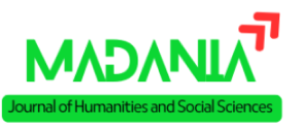Sumber Hukum Keluarga Islam Di Indonesia: Antara Hukum Negara, Hukum Islam, Dan Hukum Adat
DOI:
https://doi.org/10.59240/kjsk.v5i1.144Keywords:
Sources of Law, Islamic Family Law, PluralismAbstract
This study examines the interaction between the three main sources of law in the context of Islamic family law in Indonesia, namely state law, Islamic law, and customary law. Using a philosophical approach, this paper evaluates the extent to which the interaction between these legal sources fulfills the principles of justice, legal certainty, and utility. The findings indicate that legal pluralism creates complex dynamics, particularly in cases of interfaith marriage, polygamy, and inheritance. The main challenge lies in the inconsistency between state law, Islamic law, and customary law, which often leads to legal uncertainty and injustice, especially for women. Recommendations include revising the Marriage Law and the Compilation of Islamic Law (KHI), harmonizing legal sources, and increasing legal awareness among the public. This paper is expected to contribute to the development of a more just and harmonious family law system in Indonesia.
References
Abas, M., Purnama, W. W., Ramadianto, A. Y., Effendy, F. S. W., Bagus, M., Anggraeni, R., … Ihsan, M. (2023). Ilmu hukum konseptualisasi epistemologi prinsip hukum dalam konstitusi negara. Balai Literasi Bangsa.
Abdurrahman, H. (1992) Kompilasi Hukum Islam di Indonesia. Jakarta: CV. Akademika Pressindo
Asman, A., & kawan-kawan. (2023). Pengantar hukum perkawinan Islam Indonesia. Sonpedia Publishing Indonesia.
Badan Pusat Statistik. (2020). Statistik perkawinan usia muda di Indonesia. BPS.
Bentham, J. (1982). An introduction to the principles of morals and legislation. Methuen.
Griffiths, J. (1986). What is legal pluralism? Journal of Legal Pluralism and Unofficial Law, 24(1), 1–55. https://doi.org/10.1080/07329113.1986.10756387
Haar, T. (1960). Asas-asas dan susunan hukum adat. Pradnya Paramita.
Ismail, M. U., Rohman, M. M., & Mohsi, M. (2020). TAQNÄʾN AL-AHKĀM (Telaah sejarah legislasi hukum perdata Islam dalam hukum nasional Indonesia). Ulumuna: Jurnal Studi Keislaman, 6(1), 85–109. doi:10.36420/ju.v6i1.3957
Kamali, M. H. (2003). Principles of Islamic jurisprudence. Islamic Texts Society.
Kelsen, H. (1967). Pure theory of law. University of California Press.
Lukito, R. (2013). Legal pluralism in Indonesia: Bridging the unbridgeable. Routledge.
Mahkamah Konstitusi. (2017). Putusan Mahkamah Konstitusi No. 22/PUU-XV/2017.
Peraturan Mahkamah Agung RI Nomor 5 Tahun 2019 Tentang Pedoman Mengadili Permohonan Dispensasi Kawin
Pengadilan Negeri Yogyakarta. (2020). Putusan Pengadilan Negeri Yogyakarta No. 56/Pdt.G/2020.
Rahardjo, S. (2002). Hukum adat dalam perspektif perkembangan hukum di Indonesia. Alumni.
Rawls, J. (1971). A theory of justice. Harvard University Press.
Rohman, M. M., Mu’minin, N., Mas’ud, M. I., & Elihami, E. (2024). Methodological reasoning finds law using normative studies (theory, approach and analysis of legal materials). MAQASIDI: Jurnal Syariah dan Hukum, 4(2), 204–221. DOI: https://doi.org/10.47498/maqasidi.v4i2.3379
Rohman, M., & kawan-kawan. (2023). Metodologi penelitian kualitatif dan kuantitatif. PT Penamuda Media ISBN: 978-523-09-5373-6
Rohman, M., & kawan-kawan. (2024). Al-Fiqh al-Muashirah. PENAMUDA MEDIA
Shahih Muslim. (n.d.). Kitab al-Zakat Bab Fadl al-Nafaqah ‘ala al-‘Iyal (no. 995).
Tahir, R., & kawan-kawan. (2023). Metodologi penelitian bidang hukum: Suatu pendekatan teori dan praktik. Sonpedia Publishing Indonesia.
Undang-Undang Nomor 1 Tahun 1974 tentang Perkawinan
Undang-undang Nomor 16 tahun 2019 tentang perubahan Undang-Undang Nomor 1 tahun 1974 tentang Perkawinan
Downloads
Published
How to Cite
Issue
Section
License
Copyright (c) 2025 Akhmad Syahroni, Surya Sukti

This work is licensed under a Creative Commons Attribution-NonCommercial-ShareAlike 4.0 International License.






